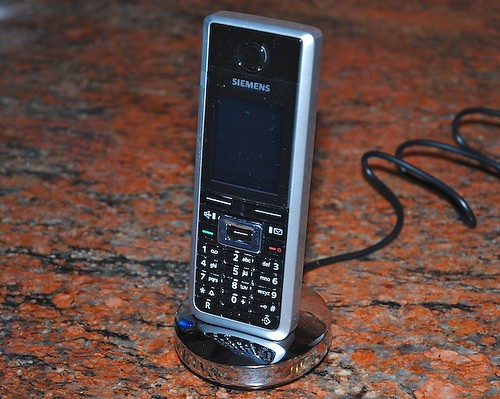Since the need to communicate outside the bounds of copper-wired communication inspired the surge of mobile communications back in the 1980’s, DECT phone systems have shaping the way in which we connect with each other around the globe. DECT is best know
DECT phone systems developed alongside existing analog cordless phone technology but ultimately became the standard for cordless communications. Due to the fact that DECT can be easily integrated into existing networks both online and offline fulfill communication requirements for conventional landline phones and mobile phones for people on the go. Cordless DECT phone systems are replacing older technologies rapidly and since originating in Europe has spread across Australia and Asia.

Siemens SL56 DECT Phone System.
What is DECT?
DECT (Digital Enhanced Cordless Telecommunications) primarily provides wireless audio communication but is in no way crippled by it. And because the technology is committed to keeping up with the pace of mobile evolution in the digital era, DECT has also integrated system-capabilities that support visual images too – another major reason for its huge success in gaining market compared to the analog telephony. Not only that but because it provides wireless communication spanning a radius ranging from 50 to more than 100 meters it can be accessed by anybody in the signal zone who can all use it at the same time – a major bonus in a corporate environment.

A Magibox Touch DECT Phone.
DECT Applications
DECT has a wide range of applications and is used in diverse contexts–from residential use, to hospitals, from large sector industries to railway stations and from airports to corporate firms. A single base station in a warehouse can control multiple phones throughout the building.
A few technical features regarding DECT phone systems are worth mentioning here.
- Bandwidth
DECT uses Time Division Multiple Access (TDMA) scheme where a total of 12 users can share a carrier frequency. TDMA is just a multiple access method where multiple users can access the frequency in different time slots.
- Inter-networkability
Just like any new technology extends the previous one or uses its features; in the same way DECT phone systems are capable of working along the existing GSM networks. Moreover such dual mode phones are available that work on both GSM and DECT standards meaning that one can call from outside using the cellular GSM phone to the home DECT or vice versa.
- Shared Antenna
A single antenna throughout the home can provide enough signals for multiple users.
- PABX systems
PABX (Private Automated Branch Exchange) system uses a radio antenna which sends a signal provided by a single phone line to multiple cordless DECT phones in a specific area e.g. a hospital. Therefore, its ability to reach wider areas and a bigger audience reduces expenses on conventional telephony systems without compromising on the quality of service.
For the past decade or so, wireless technology has been considered the future in communication systems and the development of digitally enhanced cordless telecommunication systems have taken a giant leap to progress the technology. DECT phone systems have provided a very feasible alternative to analog phones and their ability to work with cellular GSM standard, together with a reduction in cost, makes them even more desirable to both businesses and individuals.
Image Credits: Julian Berry and danhuby.









